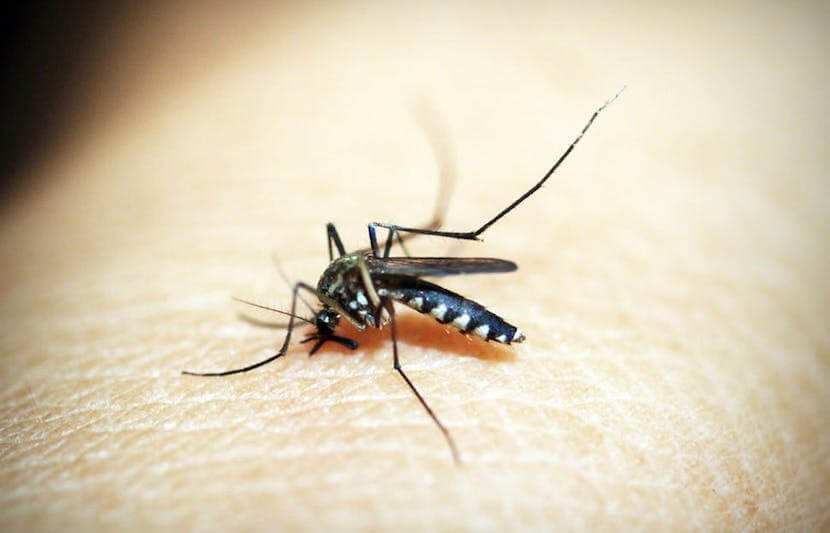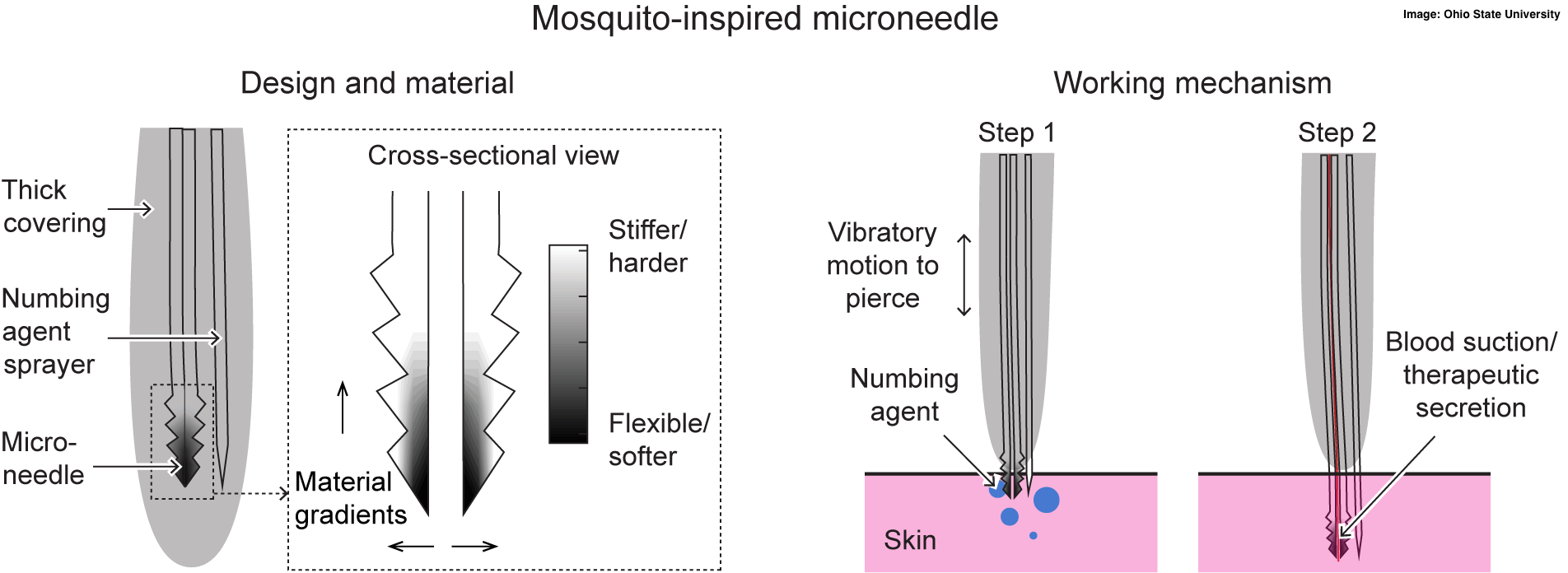Mosquitos, the pesky, little bugs responsible for spreading diseases and ruining summer barbecues, hold a clue to medical advancements.
The needle-like probe that the insects use to suck up blood has inspired Ohio State University researchers to develop a painless microneedle.
“A mosquito can sit on skin for several minutes and suck blood painlessly,” said Bharat Bhushan, professor of mechanical engineering at Ohio State and co-lead author of the study.
“We can use what we have learned from mosquitoes as a starting point to create a better microneedle,” he said in a statement.
The study was co-led by Navin Kumar, an associate professor of mechanical engineering at the Indian Institute of Technology Ropar.
Dev Gurera, a doctoral student in the Department of Mechanical and Aerospace Engineering at Ohio State, was a co-author.
The paper
In the paper, the researchers describe their deep analysis of the proboscis, the mosquito’s “needle.”
Specifically, they evaluated the four key aspects that make a mosquito’s bite painless.
Mosquitoes pierce painlessly due to a numbing agent, a subtle vibration during the piercing, a combination of soft and hard parts of the proboscis, and the serrated design of the fascicle — the part of the proboscis that is used to draw blood.
They also reviewed the work of entomologists, who had already conducted extensive research on mosquitos.
Their engineering background, however, enabled them to analyze the bugs from an engineering point of viewpoint.
“We can incorporate all of these elements into a microneedle design,” Bhushan said in a statement. “Right now, needles are very simple. There hasn’t been much innovation and we think there’s a way to try something different.”
They suggest that it would be possible to create a microneedle that contains two needles. The first would inject a numbing agent, and the second would be used to inject a drug or draw blood.
The second needle would mock the serrated edge of a mosquito’s proboscis, be more flexible and soft, and vibrate when inserted.
Four keys to painless piercing
The numbing agent used by a mosquito comes from its saliva. When the bug inserts the proboscis. it releases saliva that contains a protein that reduces pain.
The researchers used indentation, a technique used to measure the hardness of material, to determine that the outer cover of the proboscis was softest near the tip and edges and was more rigid closer to the base.
They believe the soft tip may make the needle cause less pain because it doesn’t deform the skin as much as a typical needle used in a hospital.
The serrated tip of the needle, while it might sound painful, makes insertion easier — working similarly to a fish hook.
Finally, because the needle vibrates, less force is needed to puncture the skin.

What’s next?
Bhushan claims that microneedles would be more expensive than traditional needles and would be difficult to use for pumping lots of fluids or extracting large amounts of blood.
However, they could come in handy for people with a needle phobia.
Currently, the researchers have the knowledge and materials to create their microneedle, but the next step “depends upon funding and manpower,” said Bhushan.
He also believes that is important to continue looking at nature to guide us to create better products.
“Nature has evolved itself over 3.8 billion years,” he said. “Through evolution, nature has provided functionality. Nature is a great master.”




